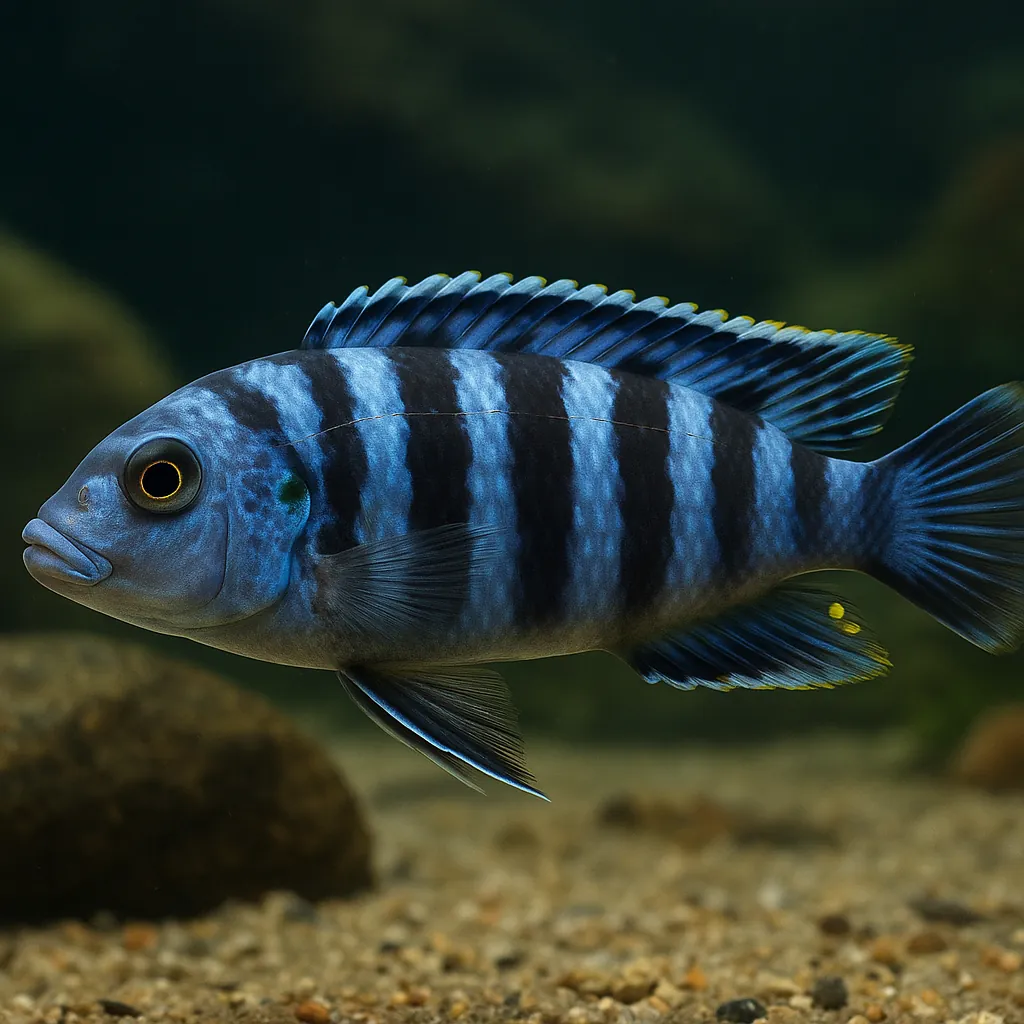
Mbuna cichlid
Introduction
Mbuna cichlids, also known as "rockfish," are a vibrant group of freshwater fish native to Lake Malawi in East Africa. Renowned for their striking colors and dynamic behaviors, they have become a favorite among aquarists seeking lively and visually appealing additions to their tanks. However, their care requires attention to specific environmental conditions and social dynamics, making them more suitable for hobbyists with some experience.
What makes Mbuna cichlids stand out in the aquarium hobby?
Their vivid coloration and active nature make them a captivating centerpiece in any aquarium setup.
Are Mbuna cichlids suitable for beginners?
Due to their territorial behavior and specific care requirements, they are better suited for aquarists with some prior experience.
Care and Environment
Proper care for Mbuna cichlids involves replicating their natural habitat and understanding their unique needs.
What is the minimum tank size for a single Mbuna cichlid?
A minimum of 114 liters (30 gallons) is recommended for a single Mbuna cichlid.
What is the recommended tank size for a group of Mbuna cichlids?
For a group, a tank of at least 208 liters (55 gallons) is ideal to accommodate their territorial nature and provide ample space.
Maintaining water parameters similar to Lake Malawi is crucial:
- Temperature: 24–27°C (75–81°F)
- pH: 7.5–9.0
- Hardness: 10–20 dH
A robust filtration system is essential to maintain water quality and provide moderate water currents, mimicking their natural environment.
Lighting should be moderate to support algae growth, which serves as a natural food source.
Decorate the tank with plenty of rocks and caves to create hiding spots and territories, as Mbuna cichlids are rock dwellers.
What should be included in a Mbuna cichlid's diet?
Their diet should consist primarily of herbivorous foods like spirulina flakes, algae wafers, and fresh vegetables.
Are there any specific challenges in keeping Mbuna cichlids?
Yes, their aggressive and territorial nature can pose challenges, especially during breeding. Providing ample space and hiding spots can help mitigate aggression.
Origin and Habitat
Mbuna cichlids are endemic to Lake Malawi, one of Africa's Great Rift Valley lakes. They inhabit the rocky shorelines and outcrops, thriving in environments with abundant rocks and caves. These areas provide shelter and breeding grounds, as well as surfaces for algae growth, which forms a significant part of their diet.
What type of environment do Mbuna cichlids prefer in the wild?
They prefer rocky habitats with plenty of crevices and caves, offering protection and feeding opportunities.
How does their natural habitat influence their behavior?
The abundance of rocks and limited open space contribute to their territorial and aggressive behaviors, as they compete for shelter and breeding sites.
Temperament and Compatibility
Mbuna cichlids are known for their aggressive and territorial nature. Males, in particular, establish and defend territories vigorously. To manage aggression, it's advisable to keep them in groups with a higher ratio of females to males, such as one male to several females.
Can Mbuna cichlids be kept with other fish species?
They are best kept with other Mbuna species or similarly sized, robust fish that can handle their aggression.
How can aggression be minimized in a Mbuna cichlid tank?
Providing ample hiding spots, maintaining appropriate group sizes, and ensuring a spacious tank can help reduce aggression.
Interesting Facts
Mbuna cichlids are maternal mouthbrooders; females carry fertilized eggs and young fry in their mouths for protection until they are ready to fend for themselves.
How do Mbuna cichlids reproduce?
Males dig pits or claim caves where females lay eggs. After fertilization, females mouthbrood the eggs and fry for about 20–21 days.
Why are Mbuna cichlids so colorful?
Their vibrant colors serve as a means of attraction during mating and help establish territory among males.
Sources
All information in this article has been gathered from the following reputable sources:
Overview
Recommended Tank Size 54.9 Gallons (for groups of 6 or more) |
Minimum Group Size 1 |
Minimum Tank Volume 30.1 Gallons |
Maximum Adult Length 5.9 inches |
Average Adult Length 4.7 inches |
Shoaling (6+ required) No |
Preferred Water Type Hard, alkaline freshwater |
Temperature Range (°C) 24–27 |
pH Range 7.5–9.0 |
Water Hardness (dGH) 10–20 |
Typical Lifespan (years) 5 years |